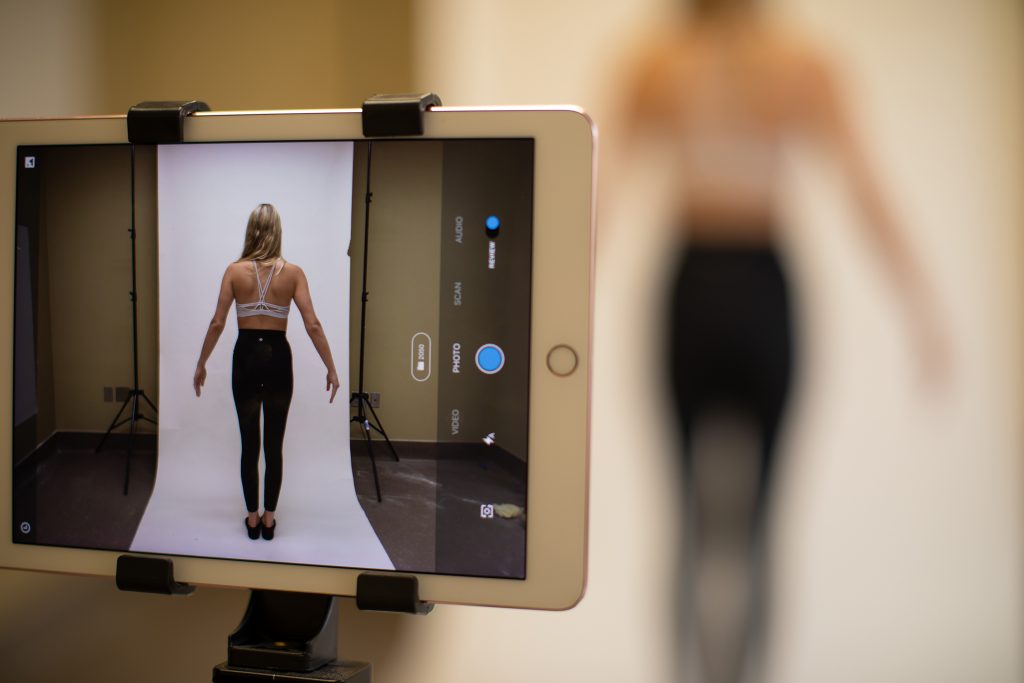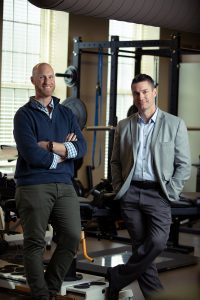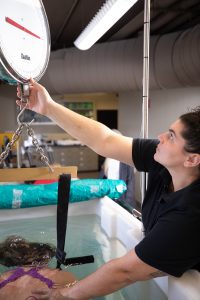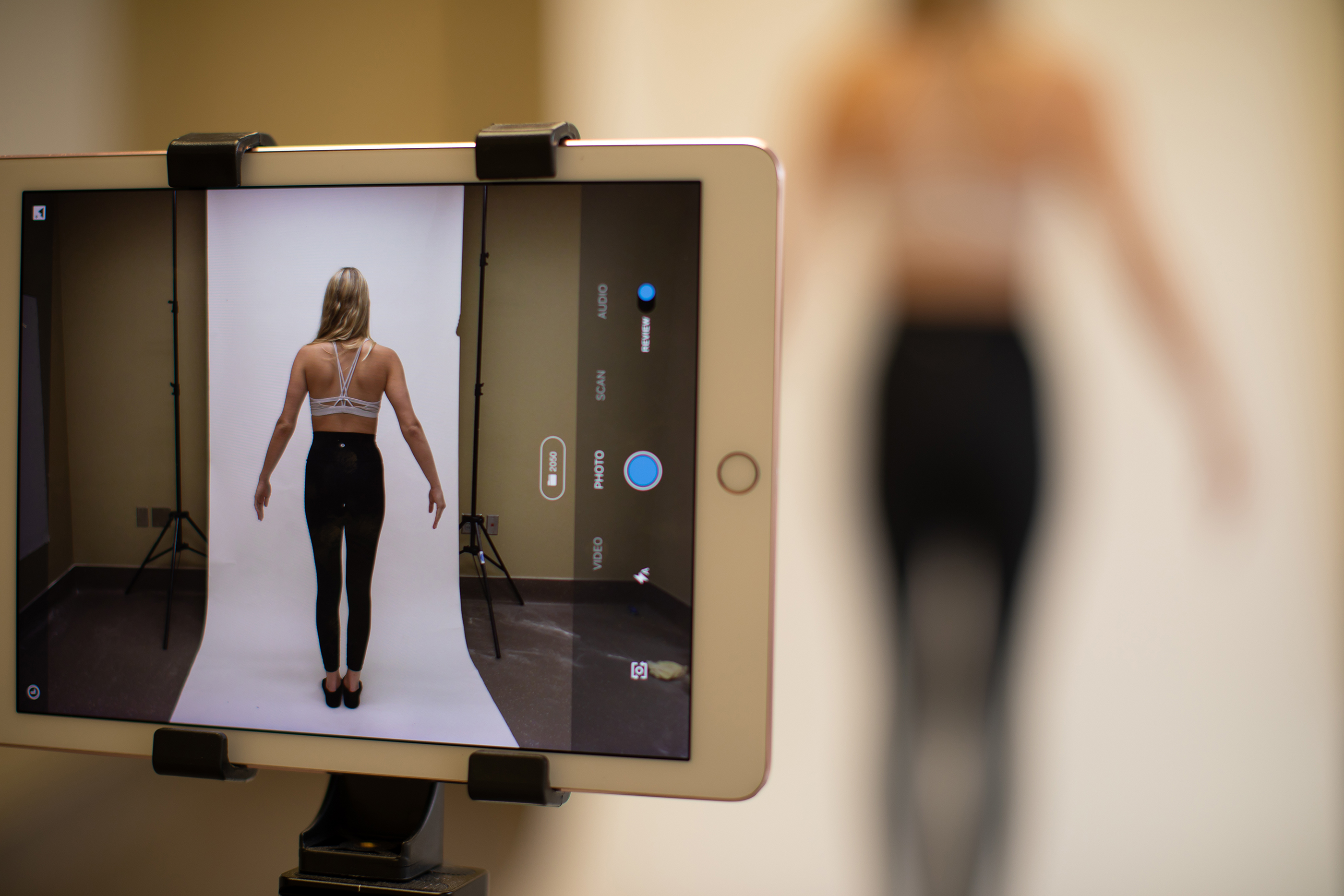
Researchers Create Mobile App to Trim Process of Collecting Body Fat Data
By David Miller
In the smartphone era, there’s a reasonable expectation information and solutions can be achieved through an app.
That expectation isn’t often applied to information obtained in clinical settings. Consider body fat percentage, the amount of fat on our bodies. Getting an accurate number typically requires sophisticated medical devices and an expert technician, not something an app on a phone can easily accomplish.
Despite body fat contributing to chronic diseases like stroke, Type 2 diabetes and some forms of cancer, an alternative measurement – body mass index – is more commonly used in clinical settings because it’s simpler to measure. But, BMI often tells an incomplete and inaccurate story of one’s body composition and subsequent risks for chronic diseases.
“BMI is a moderate predictor of body fat percentage in a population,” said Dr. Michael Esco, a UA exercise physiologist. “It’s not as powerful in relating to disease states or fitness parameters and performance. To get better, we need body composition estimates specific to body fat and lean mass, which BMI doesn’t do.”
Esco and fellow exercise physiologist Dr. Michael Fedewa have an app for that.

The two have partnered with Birmingham developer Airship to develop a smartphone- and tablet-based app that will allow users to take a single photo, run it through the app and generate accurate body composition measures, including body fat and lean mass. The app will also give the users information about specific body fat distribution patterns that may put some people at higher risk of disease.
The app’s functionality is based on data they’ve collected on sophisticated and expensive devices – like a DEXA scanner, underwater weighing and bioimpedance analysis – that accurately measure body composition. Their process uses a series of anatomical points collected from images taken of 188 diverse participants.
“After factoring in age, sex and race, and running all of the variables together, we can account for almost all of their differences,” Fedewa said.
For example, they have studies of power-lifters, overweight people, women, youth soccer players, and college hockey players.
“Those participants had the DEXA scan and other lab-based measures, which allowed us to compare to our own measure,” Esco said. “And, we had all of these variables – which served as predictors. The outcome is a statistical prediction equation.”
USING THE APP
To gain an accurate measure of body fat percentage and lean mass, a user should wear tight clothing and stand in an anatomical position – with their feet together, and their hands and arms held slightly away from the body. After creating a user profile in the app, users will be asked to take a full-body picture against a solid background and upload the photo.
Then, voila, a body volume estimate that is “99 percent” accurate is generated, Esco said. That estimate can be converted to body fat percentage or included in more advanced body compositions models that also account for bone and water, Fedewa said.
If it sounds incredibly easy, it is, Fedewa said. The hard part was collecting hundreds of data points and developing the algorithms.
“The hot things now in fitness are these 3D body scanners that can measure, either with a rotating camera or rotating platform, different circumferences of the body and use those to estimate body fat,” Fedewa said. “We saw that and thought if you’re looking at somebody – distances across, looking at them straight on – that’s probably related to their depth and width. So, maybe, instead of taking a 3D circumference scan, what if we just took the diameter of one picture and figured out a way to use that single-length measurement taken from all these landmarks and work together?”

The app will purge the photo once the measurement is made, alleviating potential privacy concerns that come with storing images on a cloud server. Personal data will not be collected, stored or sold, Fedewa said.
“It’s your data, your numbers, and you choose what to do with it,” he said.
Additionally, they’ve eliminated potential body shaming issues due to the specific nature of how one must pose for the photo and the type of clothes one must wear.
‘THE COOLEST THING I’VE DONE’
Esco and Fedewa worked with UA’s Office for Innovation and Commercialization to submit a provisional patent, which gives them a year to protect their intellectual property before filing a full patent. They expect the app to hit the market in the first half of 2020 after a development period with Airship.
“It’s the coolest thing I’ve done professionally,” Fedewa said. “I didn’t realize all of the people on campus that we’d get to work with in this process. It’s gotten us out of the lab and able to work with a cool tech company, too.”
The pair has identified a diverse population of potential users, from individuals looking to manage their weight or change their body composition, to tactical groups, like fire departments and the military.
Clinics and insurance companies are another potential market, particularly for those with limited access to clinics that accurately measure body composition. Once the app is launched, Esco and Fedewa will begin using it to measure BFP in at-risk people who can’t be measured through other techniques; for instance, someone who uses a wheelchair and cannot do a water displacement test. Tracking that person’s body composition can help physicians develop fitness plans to battle early-life obesity, Esco said.
“We become researchers and contribute to expanding body knowledge to improve processes,” Esco said. “So, we are able to do this and now use our research to not only go for publication, but research can also be used for practical purposes, to make sure that what consumers are using are valid devices, which is great to be a part of.”
Dr. Esco is an associate professor of kinesiology. Dr. Fedewa is assistant professor of kinesiology.
